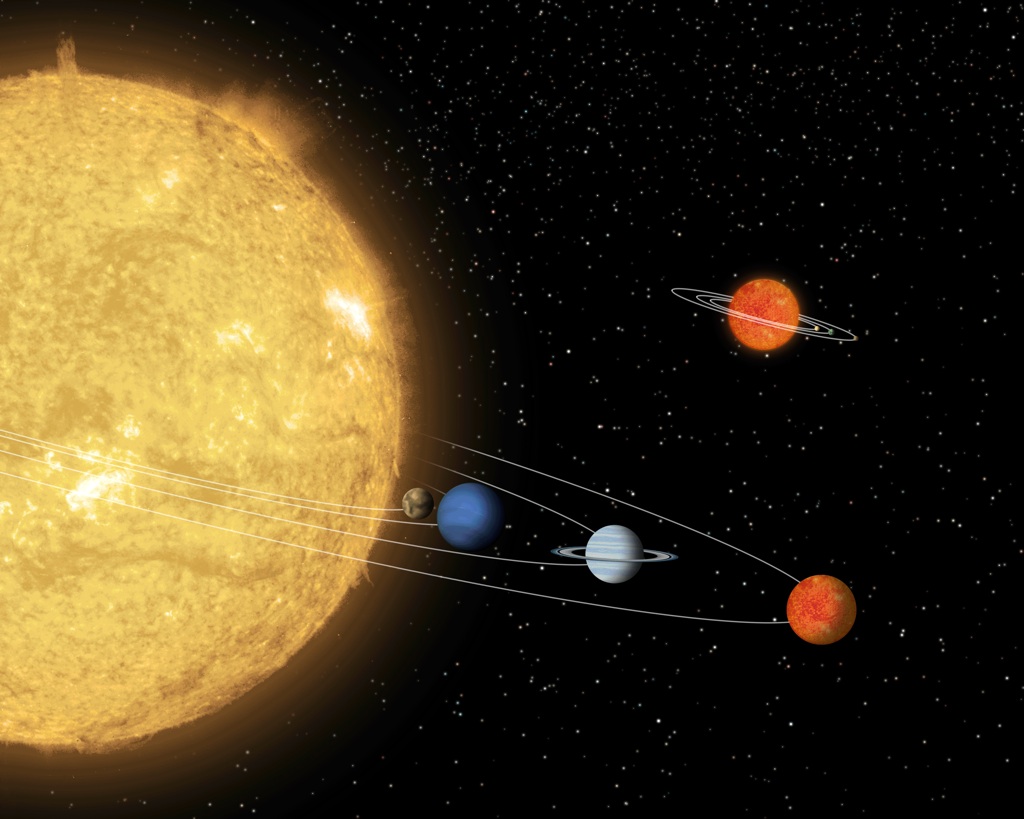One of the first known stars to host an extrasolar planet, was that of 55 Cancri. The first planet in this system was reported in 1997 and today the system is known to host at least five planets, the inner most of which, 55 Cnc e, was recently discovered to transit the star, giving new information about this planet.
55 Cnc is an interesting system in many respects. Being a mere 41 lightyears from the Earth, the system is composed of a primary, yellow dwarf star in a wide binary orbit (1,000 AU) with a red dwarf. The planetary system lies within this orbit. The primary star is just brighter than 6th magnitude meaning it is visible to the naked eye under good viewing conditions.
One of these planets, 55 Cnc e, was discovered in this system via radial velocity measurements in 2004. At that point, the planet was reported to have a period of 2.8 days, and a minimum mass of 14.2 times the mass of the Earth. However, in 2010, Rebekah Dawson and Daniel Fabrycky from the Harvard-Smithsonian Center for Astrophysics argued that gaps in the observational period skewed the statistics and the true period the planet should be a short 0.7365 days.
One of the results of this was that the planet would have to orbit closer to the parent star. In turn, this increased the likelihood that the planet could transit the star from 13% to 33%. A team led by Joshua Winn from the Massachusetts Institute of Technology went searching for this faint transit and report its detection in a recent paper. But while the star itself is one of the brightest stars in our sky to harbor known extrasolar planets, the eclipse is far from visible without precise observations, changing by only 0.0002%, one of the smallest changes known. The timing of the eclipses confirms that correction by Dawson and Fabrycky and adds new information about the body.
Given the radius determined as well as the mass, the team was able to estimate the structure of the planet and report that the mass is 8.57 ± 0.64 Earth masses. The reported radius is 1.63 ± 0.16 times that of Earth, and the density is 10.9 ± 3.1 g cm-3 (the average density of Earth is 5.515 g cm-3). This places the planet firmly into the categories of a rocky super-Earth.
The team also explores whether or not the planet could retain an atmosphere in such a close orbit (only three times the radius of the star itself). At this close range, the planet would likely be tidally locked and with an albedo typical of rocky planets, the planet would likely have an average temperature of nearly 2970 K (5,000° F). If the planet were able to redistribute the heat, it may be as low as 2100 K (3,300° F). Either way, a planet of such mass would have difficulty retaining any primordial, gaseous atmosphere. However, the team reports that it may be possible for volcanic activity to create a thin atmosphere of high molecular weight components.
While this new report adds precious little in the grand scheme of the rapidly growing body of knowledge of exoplanets, the authors close with the note that, “there is some pleasure in being able to point to a naked-eye star and know the mass and radius of one of its planets.”

